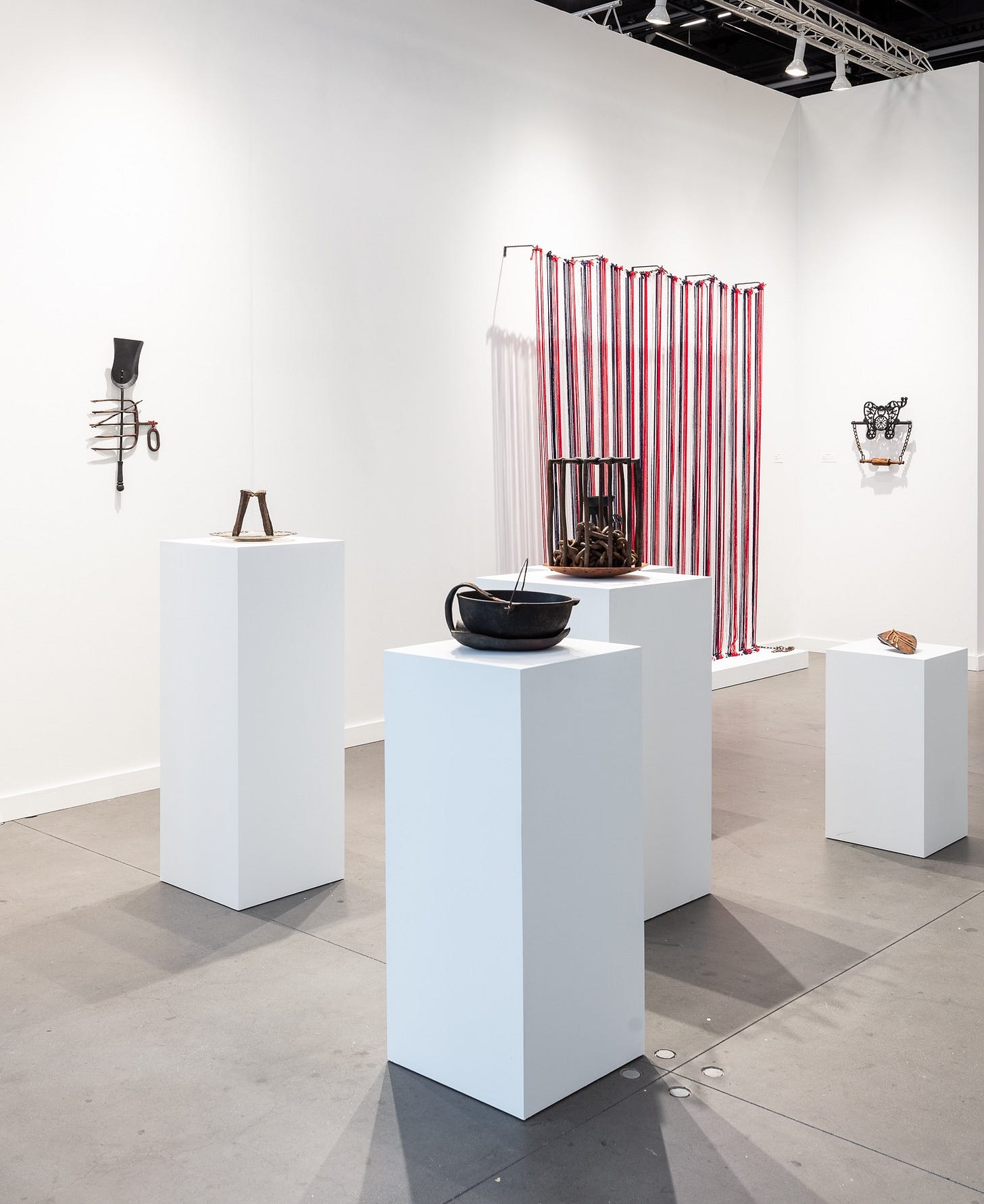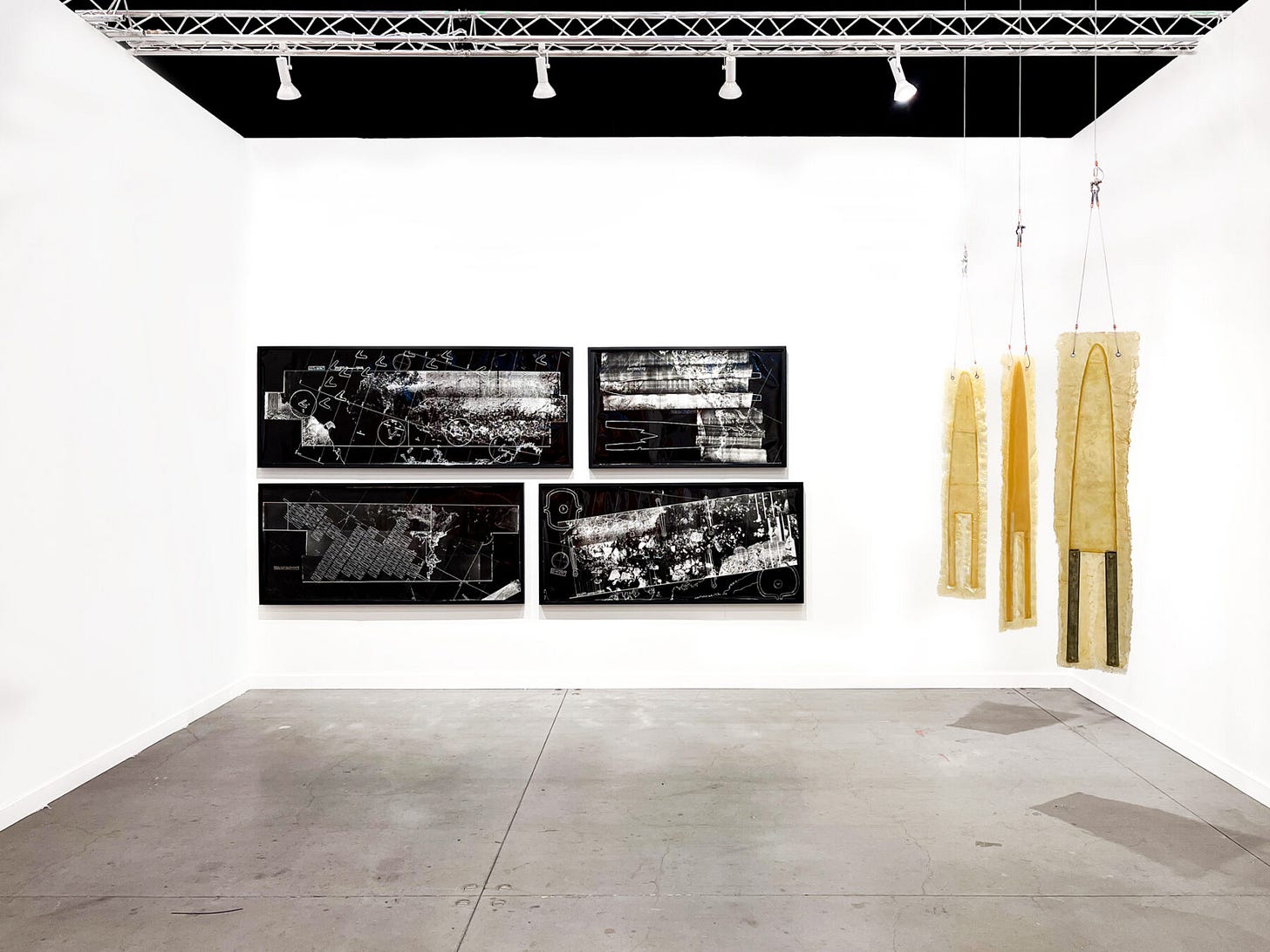Canada’s Absence at Frieze NY 2025
Thoughts on why two Canadian galleries are skipping out and the math behind it.
This week and next, Frieze New York runs from May 7 to 11 at The Shed in Manhattan. This year’s edition hosts 68 galleries, and since its launch in 2012, the fair has become one of the key events in the international art calendar, regularly drawing top galleries, collectors, and curators from around the world. Alongside major concurrent events across Manhattan, including Independent, Future Fair, and a flurry of gallery openings, Frieze NY continues to serve as a barometer for trends and priorities in the international art market.
This year, for the first time in several editions, there were no Canadian galleries at Frieze NY. It’s a subtle omission, but a meaningful one. In 2023, Toronto galleries Cooper Cole and Daniel Faria both participated, each exhibiting in the fair’s Focus section for emerging galleries and early-career artists. In 2024, only Cooper Cole returned. These appearances followed a modest but consistent presence over the last decade: Cooper Cole showed at Frieze NY in 2017, 2018, 2020, 2023, and 2024; the gallery also participated in Frieze London multiple times. Daniel Faria Gallery has participated less frequently at Frieze but maintains a consistent New York presence through The Armory Show and shows regularly at other international fairs. Both galleries have been operating since 2011 and are among the most recognized commercial platforms for contemporary art in Canada. Cooper Cole represents artists such as Gabrielle L’Hirondelle Hill, Maureen Gruben, and Jorian Charlton, several of whom have gained institutional attention internationally. Daniel Faria’s roster includes Mark Lewis, Iris Häussler, and Shannon Bool, and his gallery has been part of the growing commercial and critical infrastructure in Toronto’s west-end Junction neighbourhood, where Cooper Cole can also be found. In addition to regular participation in Art Toronto, both galleries exhibit at fairs like NADAMiami, ARCOMadrid, and Art Basel.

The decision not to exhibit at Frieze this year likely comes down to a mix of financial and strategic considerations. Booth fees at Frieze can range from $20,000 to well over $100,000 USD depending on size and location. Then there are additional costs for shipping, travel, staffing, and production. Add a volatile exchange rate and a backdrop of rising inflation, and the risk calculus gets tricky. On top of that, the ongoing U.S.-Canada trade tensions and retaliatory tariffs have added additional strain. While larger galleries can often amortize art fair investments across multiple high-value sales, smaller and mid-size dealers, particularly those focused on emerging artists, often operate with much tighter margins. In other words, even for those galleries like Cole and Faria with strong reputations, the costs may simply no longer justify the exposure.
To understand the stakes, it’s useful to compare the stats from Frieze NY 2024 with Plural 2025, one of Canada’s own national commercial art fairs, which wrapped up in Montreal just a few weeks ago. Organized by the Contemporary Art Galleries Association, Plural reported $1.75 million CAD in sales from 44 galleries, an average of about $39,750 per gallery. Frieze, by contrast, generated tens of millions in total sales. With one gallery reporting sales of over $5 million USD from just their booth alone. If you guessed that the gallery was Hauser & Wirth, you’re clearly keeping tabs on the blue-chip market.

Now, let’s think about this on a per visitor ratio. Frieze NY 2024 welcomed 25,000 visitors to The Shed. Though total sales are not publicly reported, sales from publicly disclosed transactions suggest a conservative floor of at least $40 million USD. That would place sales per visitor at around $1,600 USD. Plural’s foot traffic was less than half that of Frieze NY at 10,000, working out to roughly $175 CAD in art sales per visitor. Frieze NY’S 2024 sales outcomes were nearly nine times higher per visitor than Plural.
These numbers reflect two fundamentally different ecosystems. Frieze serves as a high-stakes, international showcase where seven-figure deals are not uncommon. Plural, on the other hand, is operating in a smaller but resilient national market. And while the dollar figures differ dramatically, Plural’s turnout of 10,000 people is significant and praise-worthy, particularly in a country with a smaller collector base and fewer population centres. Against this backdrop, it’s impressive too that Plural’s top line held steady despite economic uncertainty, with a notable shift: institutional acquisitions rose to 18% of sales (up from 12% in 2024), and corporate collections also grew rising to 14%, compared with 11% the previous year. Both point to a maturing market that is beginning to leverage its unique strengths.
The takeaway here is less about Canada’s failure to compete, and more about different strategic priorities that galleries might have when deciding where to show and how to grow. Frieze NY remains a high-risk, high-reward environment that amplifies global visibility. Plural is a national platform that, while smaller, is more affordable, less risky, and possibly more aligned with a gallery’s existing collector base. That Cooper Cole and Daniel Faria chose to stay focused on the domestic and European circuits this spring could reflect a pragmatic shift in where and how Canadian galleries want to grow. It may also reflect a recalibration: in a year where even some mid-tier American galleries reported strain, pulling back from New York may not signal weakness, it may simply be smart resource management.
As Canadian art moves into its fall season with Plural and Art Vancouver just having wrapped and Art Toronto on the horizon, the absence at Frieze NY should be noted, but not overstated. The challenge now is not just to return to international stages, but to do so in ways that are sustainable and strategic. With resilient domestic fairs and Canadian artists increasingly commanding global attention, the future of Canadian galleries on the world stage still looks promising—just maybe not routed through Midtown this May.




